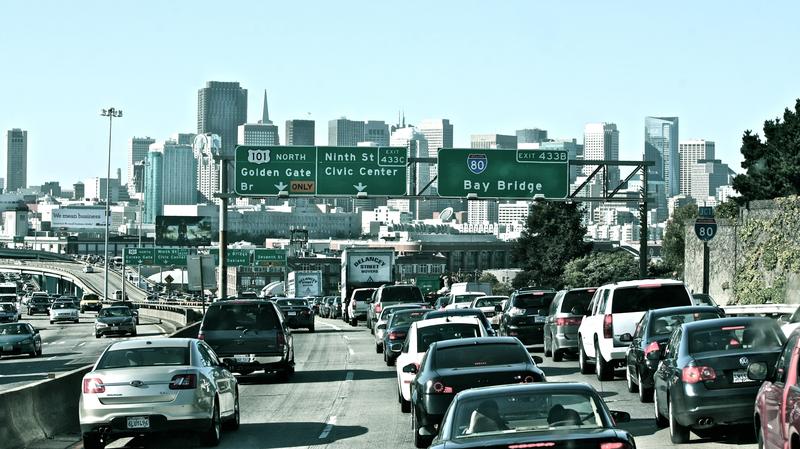
Rush-hour traffic in downtown San Francisco is projected to get worse in the coming decade -- prompting officials to rethink car access to the urban core.
"We're going to be faced with severe congestion at some point. We're not able to say exactly when, but it's certainly within the next, I'd say, 10 years. And if we don't move decisively now, it might even be sooner than that,” said Tilly Chang, the deputy planning director at the San Francisco County Transportation Authority.
Chang said a plan to charge drivers to enter or leave downtown, known as congestion pricing, is again emerging as one solution to alleviate gridlock. She said something more is needed to really slow down the growth of traffic flooding into that area.
“We definitely see parking management and congestion pricing as examples of how we can encourage people to review their choices and to really think about, 'Do I really need to make this trip in a car?' ” Chang said.
Congestion pricing would involve a toll for vehicles entering or leaving downtown at certain hours. Drivers would pay a fee -- say, $3 a trip -- when they drive downtown. They’d be charged automatically, through a device like FasTrak or a camera system that would record their license plates. The money raised would be used to enhance transit and make the streets safer for pedestrians and bicyclists.
Congestion pricing has been talked about before in the Bay Area and it’s a tough sell to both drivers and politicians. But things might be changing.
Jane Kim represents South of Market on the Board of Supervisors. Her district has more than its share of traffic snarls and one of the city's highest rates of injuries and deaths from vehicle-pedestrian collisions.
“As South of Market grows in density, I think more and more residents are talking about it and switching from saying, 'This is a terrible idea" to thinking, 'This may be the only way I can have a livable neighborhood,' ” Kim said.
With several large developments on tap for her district, including a proposed basketball arena, she wants to explore congestion pricing.
“We're going to have to figure out ways to get people out of their cars, and onto other modes to get into the Financial District or downtown," Kim said. "Or we're going to have to ask people to pay if they do choose to drive so we can help improve that infrastructure."
A congestion pricing plan from the city Transportation Authority will soon undergo an environmental review. Any proposal the city develops would need approval from the Legislature.
